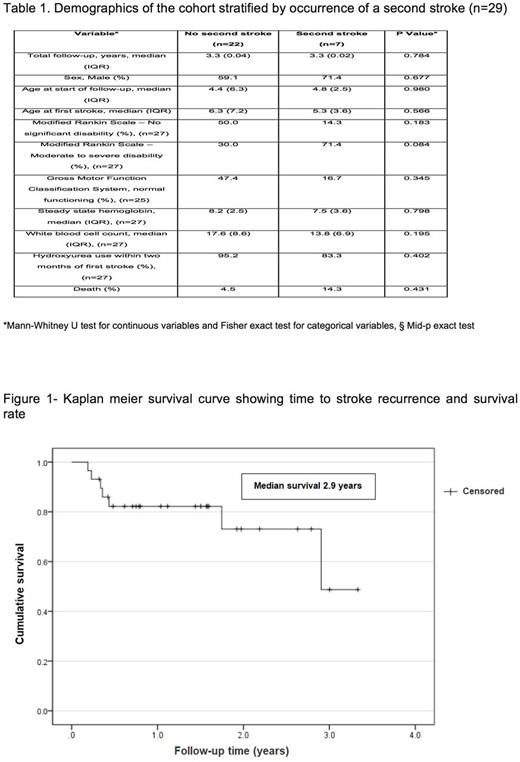Abstract
Introduction- Nigeria has the highest burden of sickle cell anemia (SCA) in the world accounting for 50% of the 300,000 SCA births globally. In a recent survey conducted locally in Nigeria, Kano state was shown to have the highest number of children with SCA in Nigeria, with Kano metropolitan city alone having over 15,000 children with SCA. Stroke is one of the most devastating yet preventable complications in children with SCA. Without transcranial Doppler (TCD) screening and treatment, approximately 7 to 10% of the children with SCA will develop strokes. Among untreated children with strokes, there is at least a 50% recurrence rate after 2 years. Due to the high rate of stroke recurrence and the absence of regular blood transfusion therapy as a viable option due to availability, poor parental acceptance of blood transfusion, and cost, hydroxyurea therapy is the only viable option for the majority of children. However, the benefit and risks of hydroxyurea for secondary stroke prevention is poorly defined in Nigeria.
Methodology- In preparation for a phase III trial of hydroxyurea for secondary stroke prevention in children with SCA in sub-Saharan Africa, we initiated a standard care protocol in 2014 to manage children with strokes at Aminu Kano Teaching Hospital Kano, Nigeria, to determine the prevalence of stroke among children with SCA between Jan 2014 to May 2017. Ethical approval to conduct the study was received from the ethics committee of Aminu Kano Teaching hospital in Kano, Nigeria.
Result-We identified 29 children with SCA who had an initial stroke within the study period, with 7 children having >1 stroke, and a mortality rate of 6.9% (2/29). Death was unrelated to any toxicity associated with hydroxyurea. None of the children treated with hydroxyurea, had therapy held because of myelosuppression or anemia. The rate of initial stroke in the pediatric clinic population of approximately 500 children (age birth through 12 years) over a three-year period was 1.97 per 100 patient-years. The median age for the first stroke was 5.6 years (range 1.1 to 14.2 years). Children with initial strokes were followed for a total of 38.8 years and had a rate of recurrence of 18.1 events per 100 patient-years, (figure 1) significantly below the expected rate of 29 events per 100 patient years if no treatment was offered, but a significantly higher incidence rate compared to regular blood transfusion of 1.9 events per patient year. Of the patients with an initial stroke, 65.5% received an exchange transfusion and 92.6% were either already on hydroxyurea (n=1) or started on fixed dose hydroxyurea (n=24), 20 mg/kg/day, within 2 months of the stroke, as part of standard care. The median modified Rankin was 1 with a range from 0 to 6, on the gross motor function classification system score. 10 children (40.0%) had normal function and 6 (24.0%) had level III or higher. Both measurements were completed at a median of 1.6 years (IQR 1.9 years) after the initial stroke. (Table I)
Conclusion-Our results provide strong evidence for the high prevalence of stroke and death following a stroke in children with SCA in Nigeria. Optimal hydroxyurea dose for secondary stroke prevention is unknown in low-resource setting. Given the prevalence of strokes in unscreened and untreated children with SCA, primary and secondary stroke prevention program are a public urgency in children with SCA living in Nigeria. We are currently conducting a randomized controlled trial for secondary prevention of strokes comparing fixed dose of 20 mg/kg/day vs 10 mg/kg/day (NCT NCT01801423).
No relevant conflicts of interest to declare.
Author notes
Asterisk with author names denotes non-ASH members.


